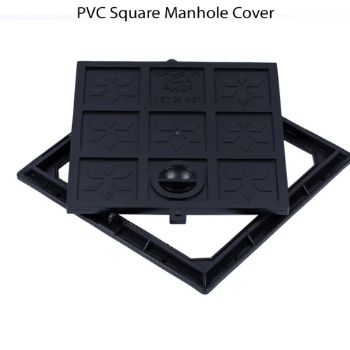In the bustling city of Mumbai, where every street corner tells a story of resilience and development, infrastructure forms the backbone of progress. For residents like Ramesh and his family, the daily hustle is often interrupted by infrastructural inefficiencies that challenge their quality of life. One such challenge is the issue of outdated and inadequate drainage systems, which can lead to road blockages, flooding, and health hazards during the monsoon season.
Enter CI (Cast Iron) and PVC (Polyvinyl Chloride) manholes—innovative solutions that are transforming urban infrastructure. These manholes are not just about covering drainage pits; they play a crucial role in maintaining an efficient and safe drainage system, which significantly impacts urban living.
Ramesh, a middle-class resident of Mumbai, works as an IT professional. His life, like many others, revolves around balancing work, family, and the chaos of city life. However, the monsoon season brings an added layer of stress. The streets become rivers, traffic snarls increase, and the risk of diseases such as dengue and malaria rise due to stagnant water. This recurring problem has been a cause of emotional distress and practical inconvenience for him and his neighbors.
The core issue here is the outdated and inefficient manhole systems that fail to handle the volume of water during heavy rains. Traditional manholes, often made of less durable materials, are prone to damage and displacement, further aggravating the problem. This is where CI and PVC manholes come into play, offering a robust and reliable solution.
CI manholes are known for their durability and strength. Made from cast iron, they can withstand heavy loads and harsh environmental conditions, making them ideal for busy urban areas. On the other hand, PVC manholes are lightweight, cost-effective, and resistant to corrosion, making them easy to install and maintain. Both types offer distinct advantages, and their strategic deployment can significantly improve drainage systems across the city.
Consider the case of Pune, another rapidly growing city in India. A few years ago, the local municipal corporation decided to upgrade their drainage system by replacing outdated manholes with CI and PVC options. The results were transformative. Not only did the new manholes reduce flooding incidents during the monsoon, but they also minimized traffic disruptions caused by maintenance work. Residents reported a noticeable improvement in their quality of life, and the city saw a reduction in waterborne diseases.
For Ramesh and many like him, the introduction of CI and PVC manholes means more than just improved drainage. It's about peace of mind and the ability to move freely without the constant worry of waterlogging and its associated problems. This seemingly simple upgrade addresses a major emotional and practical issue faced by urban residents, enhancing their daily living experience.
Moreover, the benefits extend beyond individual convenience. Enhanced drainage systems contribute to the overall health and safety of the community, reduce infrastructural damage, and support the city's economic activities by ensuring smoother transportation and commerce.
In conclusion, as cities like Mumbai and Pune continue to grow, the demand for efficient and reliable infrastructure solutions like CI and PVC manholes becomes increasingly critical. These products not only solve immediate drainage challenges but also contribute to a sustainable and livable urban environment. For residents, this means a better quality of life and a brighter future for generations to come.
Investing in such infrastructure is not just about solving today's problems; it's about building resilience and paving the way for tomorrow's progress. As we continue to innovate and adapt, solutions like CI and PVC manholes will remain pivotal in shaping the cities of the future.
Visit Vyaparify Site:
https://id.vyaparify.com/shri-nmk-enterprisesLocation:
https://maps.app.goo.gl/mnDWZYKehjWT3oMs9?g_st=com.google.maps.preview.copy 
